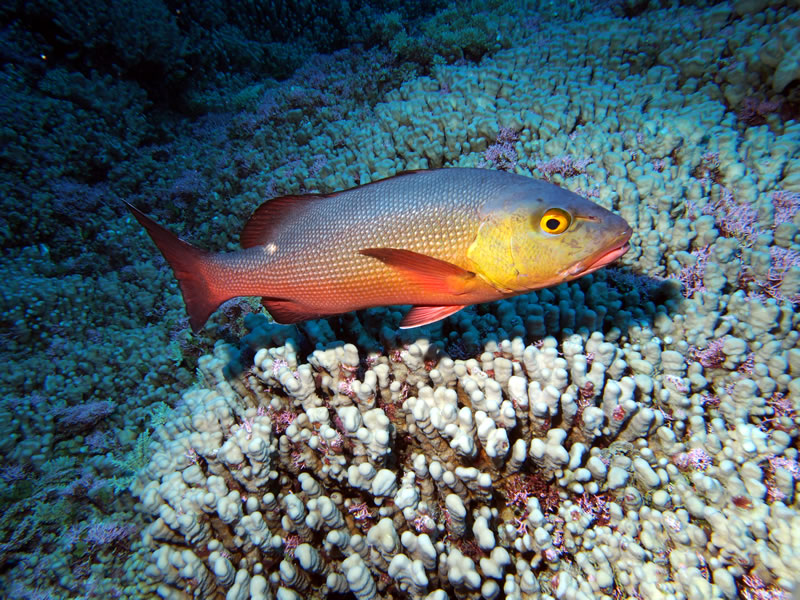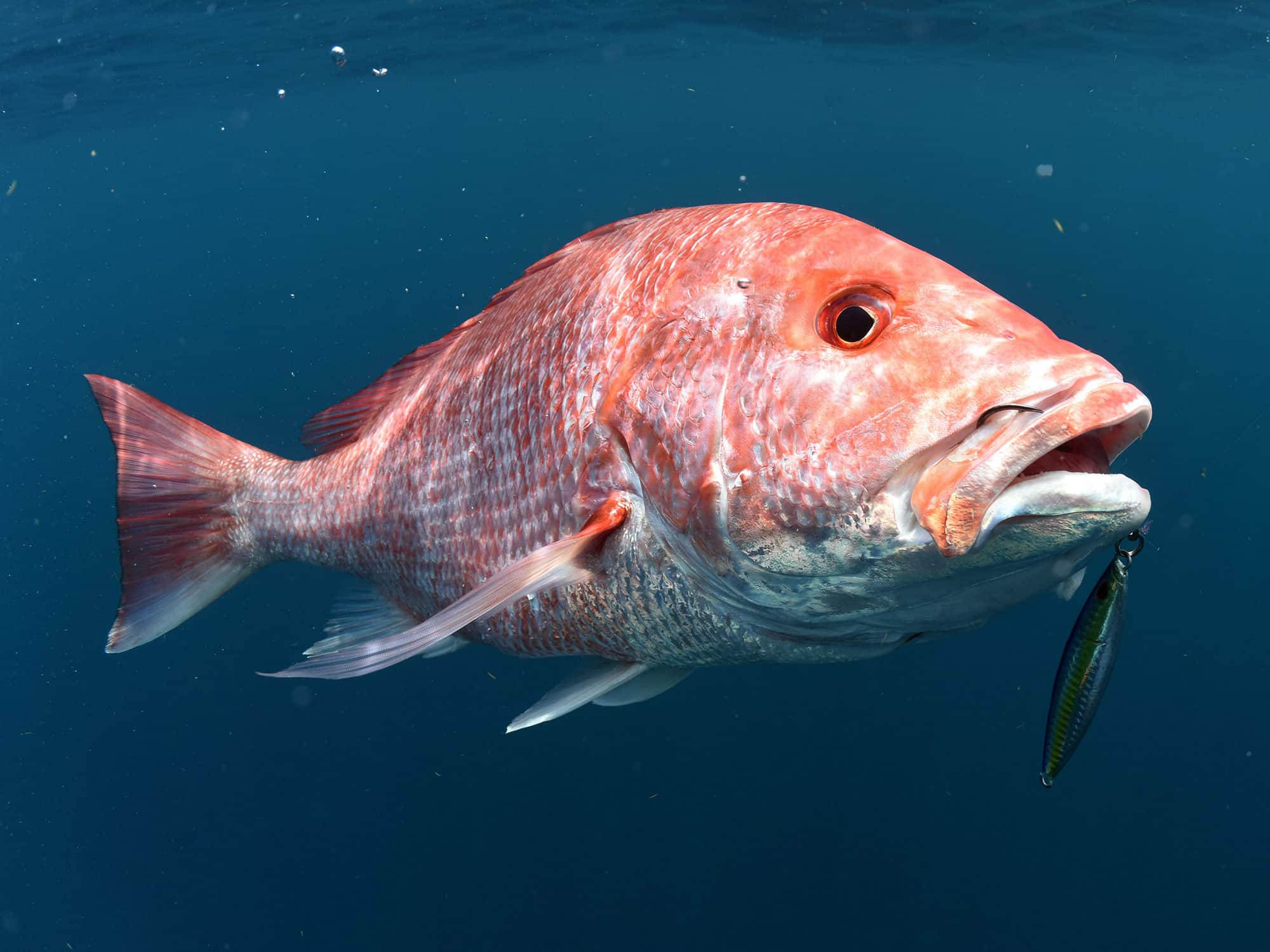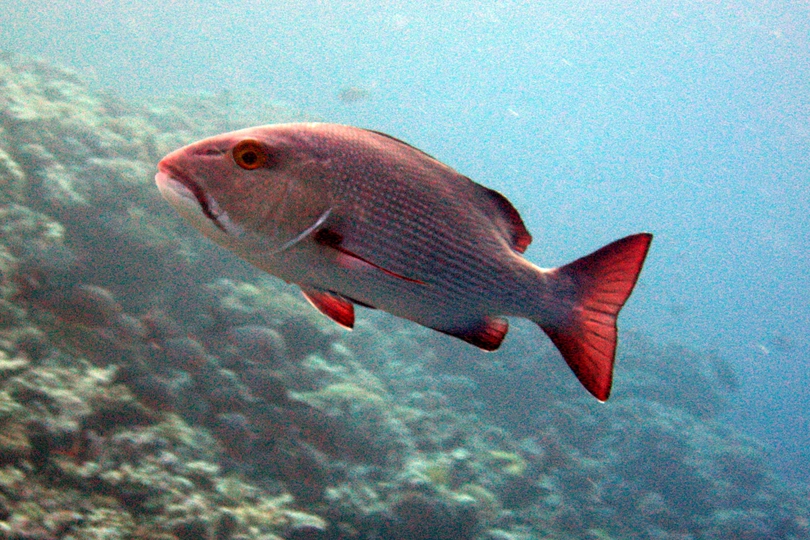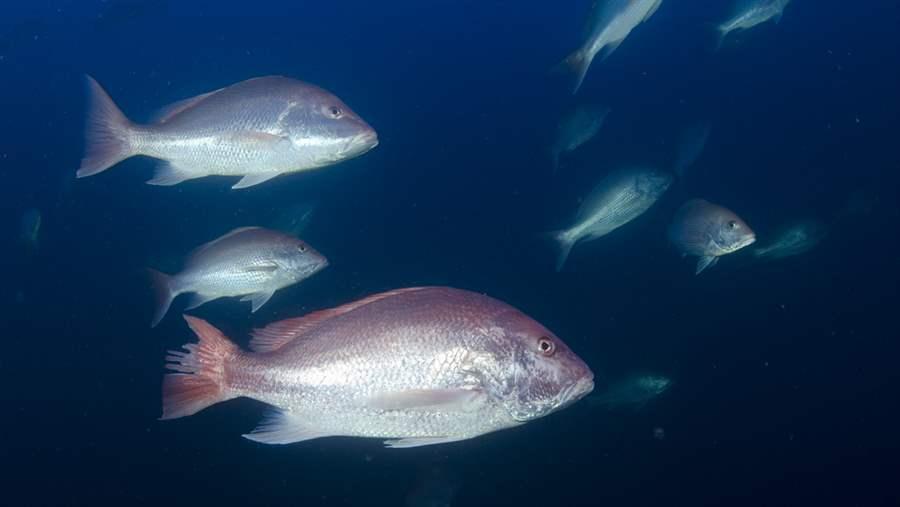The world’s Oldest tropical reef FISH, aged 81, remains a Mystery in their maximum LifeSpan

The octogenarian snapper, the oldest tropical reef fish discovered to date, suggests reef fishes could grow to be even older—if we let them.
Over the past century, scientists have learned a great deal about the thousands of fish species found on tropical coral reefs.
They’ve determined what many of them eat, how they breed, and where they sit on the tree of life. However, when it comes to knowing how long these fishes live, scientists really haven’t got a clue.

That’s why the discovery of an 81-year-old midnight snapper off the coast of Broome, Australia, is forcing marine biologists to reevaluate their perception of tropical reef fish longevity.
The snapper is two decades older than the previous record holder for tropical reef fishes. “That was quite a surprising thing for me to see,” says Brett Taylor, a fish ecologist at the Australian Institute of Marine Science (AIMS), who helped find the senior fish.

The octogenarian snapper is one of 11 snappers over the age of 60 discovered by Taylor and his colleagues off the coast of Western Australia between 2016 and 2020.
The decades-old fish were collected by scientists as part of a long-term study on the longevity of marine fishes. Among them were a 79-year-old two-spot red snapper and a 53-year-old black and white snapper.
 .
.
The fish were caught in areas where commercial fishing is prohibited. Even though these areas tend to contain more mature fishes than areas where fishing is allowed, the researchers were still surprised at the advanced ages of the fish they examined.
“I was aware that some of these species were very long-lived … but it wasn’t until we really started working on these fish in Western Australia that we realized how much older they could get,” says Taylor.

What’s more, these fish may not even be at the limit of their natural life spans, the researchers say.
Researchers from AIMS and the Western Australian Fisheries and Marine Research Laboratories determined the age of the snappers by dissecting them and examining their otoliths—the small calcium carbonate structures, also known as ear stones, found in the inner ears of fishes that aid in balance and hearing.

Otoliths contain growth rings, similar to those found in trees, that scientists can use to determine a fish’s age.
Although it is relatively easy to determine the age of an individual fish, it is extremely difficult to determine the maximum life span of a fish species.

Doing so requires scientists to raise fish in captivity, which can take decades, or to find fish at the end of their natural life spans in the wild, which can be challenging, especially for species that are targeted by fishers.
Additionally, “there’s not much funding for these kinds of basic studies,” says Luiz Rocha, curator of ichthyology at the California Academy of Sciences.

Rocha, who was not involved with the study, says the lack of funding for studies of fish longevity is unfortunate because “the single biggest impediment to proper fisheries and conservation management today is the lack of this type of data.”
To properly manage a fish population, scientists need basic life history information about the species, such as its maximum life span, age of sexual maturity, and reproductive output. This information is scarce for many species, even some that are heavily fished.

Rocha believes that if similar studies were conducted on different species of tropical reef fishes, many would likely prove capable of growing just as old as the 81-year-old snapper.
“We just learned that the Greenland shark can live 400 years. There are all kinds of cool things that we don’t know about yet,” he says. “The more we look, the more interesting things like this we will find.”









